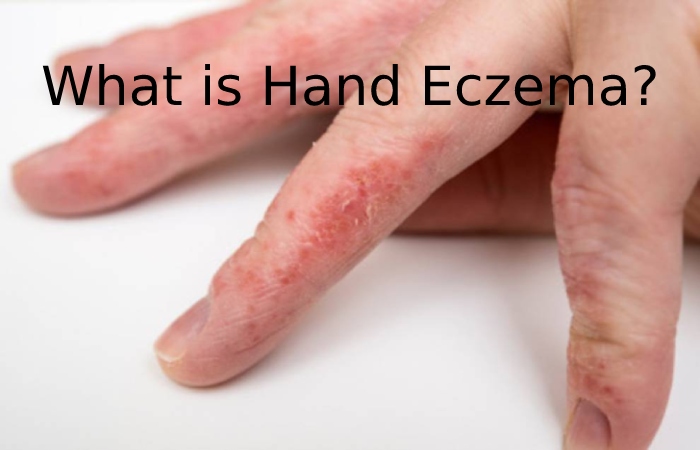Table of Contents
What is Hand Eczema?
Hand eczema refers to an inflammation of the skin of the hands that makes them appear red, rough, scaly, and the occasional appearance of cracks or tiny blisters. People who suffer from it suffer from itching, pain, tightness, or burning, dramatically deteriorating their quality of life. It is a non-contagious disease frequent in the general population, with an annual prevalence reaching 10%.

We talk about eczema about an inflammatory reaction of the skin characterized by aging, scaling, and itching, which, in the most extreme cases, is accompanied by a small bladder with liquid contents.
Why is Hand Eczema Produced?
Traditionally, two types of hand eczema have differentiated: irritant hand eczema and allergic hand eczema. The first would produce by continuous or repeated skin contact with substances considered irritants such as water, detergents, and caustic or acid products; Conditions such as humidity, occlusion, sweat, and friction also influence its appearance. The second would come from the contact of the hands with a specific substance to which the individual is allergic. For its diagnosis, it is essential to carry out specific allergy tests called “patch tests.”
Today, it is careful that most hand eczemas result from the combined action of irritant and allergic factors on a genetically conditioned individual predisposition.
How to Prevent and Treat Hand Eczema?
Some general recommendations can help prevent the onset of hand eczema or help it heal:
Avoid over-washing your hands. Use lukewarm water and avoid boiling water. If they wash frequently, it is best to replace soap and water with alcohol-based disinfectants. Dry your hands well but gently after washing, especially the spaces between your fingers.
Use soap-free, fragrance-free, and, if possible, preservative-free products such as is triazolinones (Kath on CG®) for hygiene, applying moisturizers frequently throughout the day, especially after washing.
Remove rings and bracelets before working wet or washing your hands.
Avoid contact with irritants such as soaps, detergents, caustics (bleach), solvents, scouring pads, etc. When preparing food, try to minimize contact with juices, fruits, vegetables, raw meats, onions, and garlic.
When washing your hair, you should wear vinyl gloves. If this is not possible, use the handless affected by dermatitis.
Use a long-handled brush for washing dishes and, if possible, consider using a dishwasher instead of washing your hands.
It is advisable to wear cotton gloves under rubber gloves, as sweating can worsen eczema. Also, wear cotton gloves for general household chores (for example, cleaning up dust) and handling fabrics or cardboard. If it’s cold, wear gloves regularly.
If, after doing patch tests, you are allergic to a substance, you should avoid it by making sure that none of the products you use contain it.
In addition to these measures, hand eczema will often require medical treatment, which will vary depending on its severity and individual circumstances. Initially, topical corticosteroids’ general use and various systemic drugs or phototherapy may consider depending on the response obtained.
What Type of Hand Eczema is There?
There are many types of hand eczema. In general, two should be different: a group of so-called irritative eczema and the second group of allergic-type eczema.
In irritant eczema, a single or more often repeated and continuous exposure to irritating substances or factors results in skin damage. It develops in any individual exposed to these factors or substances.
On the other hand, allergic contact eczema develops in people previously sensitized to specific substances. It only occurs in individuals with minimal contact with the sense they are allergic to, resulting in eczema lesions.
By distance, the most common cause of hand eczema is irritant eczema. Various factors include excessive hand cleaning, humidity maintenance, detergents, caustics or acids, dust or dirt, etc.
Conclusion
One of the most common triggers is allergic reactions, whether through inhalation, ingestion, or direct skin contact with allergens. But the humidity and temperature changes or stress can also lead to its occurrence.
